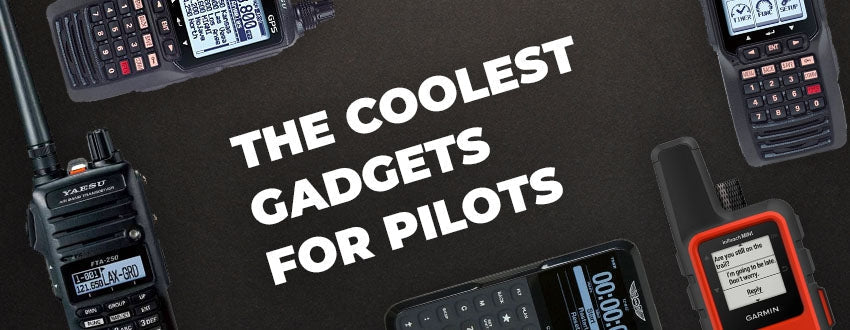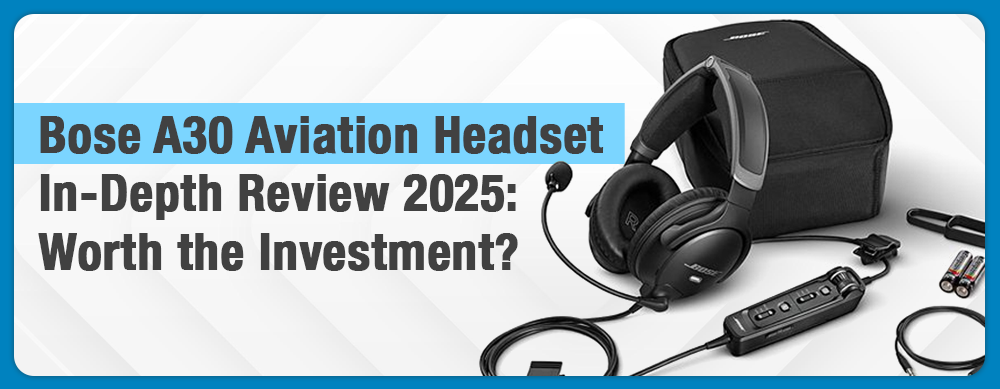Los motores a reacción ayudan a impulsar el mundo moderno en el que vivimos. Dependemos de ellos para poder atravesar grandes distancias y nos ayudan a conectarnos con personas de todo el mundo. ¡Los motores a reacción son una auténtica maravilla de la ingeniería!
Toman aire, lo comprimen, lo mezclan con combustible y encienden la mezcla para generar empuje. Es sorprendente ver cómo funcionan y este proceso impulsa a los aviones a velocidades increíbles, lo que permite viajar de maneras que las generaciones anteriores solo podían soñar.
Si alguna vez te has preguntado cómo funciona un motor a reacción, en este artículo aprenderás sobre el funcionamiento de los motores a reacción, explorarás cómo han evolucionado y echarás un vistazo a los diferentes tipos que impulsan los aviones en la actualidad.
¡Empecemos!
RESUMEN
-
Una breve historia del desarrollo de los motores a reacción
-
Conozca los componentes principales de un motor a reacción
-
Un desglose paso a paso de cómo funciona un motor a reacción
-
Aprenda sobre los diferentes tipos de motores a reacción y sus características únicas.

Los orígenes de los motores a reacción: una breve historia
¿Qué sucede exactamente dentro de un motor a reacción y cómo llegamos hasta aquí? Bueno, el viaje comenzó a principios del siglo XX, cuando Frank Whittle, en el Reino Unido, y Hans von Ohain, en Alemania, fueron considerados los inventores del motor a reacción moderno.
Los primeros trabajos de Whittle sobre turbinas de gas en la década de 1930 ayudaron a sentar las bases de los motores a reacción modernos que tenemos hoy. Sus diseños apuntaban a mejorar los motores de pistón existentes, que estaban llegando a sus límites en cuanto a velocidad y rendimiento.
Aunque Whittle patentó su diseño por primera vez en 1930, el avión a reacción de von Ohain fue el primero en volar en 1939. Ambos hombres trabajaron de forma independiente, sin conocimiento del trabajo del otro, lo que hace que sus avances sean aún más sorprendentes.
La idea de Whittle de utilizar una turbina de gas para propulsar aviones acabó enfrentándose al escepticismo inicial del Ministerio del Aire británico, pero su persistencia dio sus frutos cuando su motor impulsó un Gloster E28/39 en su primer vuelo en 1941.
Von Ohain contó con el apoyo del industrial Ernst Heinkel, lo que ayudó a acelerar el desarrollo de su prototipo. Su éxito hizo que el Heinkel He 178 se convirtiera en el primer avión propulsado por turborreactores en volar.
Los descubrimientos de estos dos hombres increíblemente inteligentes terminaron cambiando la aviación para siempre.

Componentes del motor a reacción y cómo funcionan
Entonces, ¿cómo funciona exactamente un motor a reacción?
Un motor a reacción funciona según el principio básico de la propulsión a chorro:
El aire se aspira comprimido, se mezcla con combustible, se enciende y se expulsa a alta velocidad, creando empuje.
Esa es la explicación sencilla, pero vamos a entenderla un poco mejor. El proceso comienza con el ingreso de aire al motor a través de la admisión.
Desde allí, entra al compresor, que comprime el aire aumentando su presión. Este aire comprimido pasa a la cámara de combustión, donde se encuentra con el combustible y la mezcla se enciende.
Los gases de alta energía producidos por esta combustión pasan por una turbina, que acciona el compresor, y finalmente salen por la tobera de escape, impulsando el avión hacia adelante.
Esto es lo que encontrará en la mayoría de los aviones comerciales y militares actuales, con mejoras y variaciones según el tipo de motor que se utilice.
Motores de turbina de gas
Los motores a reacción son un tipo de motor de turbina de gas. Un motor de turbina de gas utiliza la energía de los gases calientes para impulsar una turbina, que a su vez alimenta un compresor.
El proceso es continuo y crea un flujo constante de potencia y empuje. En los motores de turbina de gas, el aire se aspira y se comprime continuamente, y el proceso de combustión también es continuo, lo que permite un empuje constante.
Los gases calientes que se producen en el proceso de combustión no solo proporcionan la fuerza necesaria para el empuje, sino que también ayudan a impulsar el compresor a través de la turbina. Este uso de energía es lo que hace que los motores de turbina de gas sean tan ideales para la propulsión a chorro.

Cómo funciona un motor a reacción: explicación paso a paso
-
Admisión : El aire es aspirado hacia el motor a través de la admisión delantera.
-
Compresión : El aire se comprime mediante el compresor, aumentando la presión y la temperatura.
-
Combustión : El combustible se mezcla con el aire comprimido en la cámara de combustión y la mezcla se enciende.
-
Turbina : Los gases resultantes a alta velocidad golpean las aspas de la turbina, provocando que giren.
-
Escape : Estos gases salen de la tobera a gran velocidad, generando el empuje que mueve la aeronave.
Tipos de motores a reacción
Los motores a reacción vienen en varias formas, cada una adecuada a diferentes necesidades.
-
Los turborreactores son el tipo más simple y generalmente se utilizan en aviones militares para vuelos de alta velocidad.
-
Los turbofánes se encuentran en los aviones comerciales, son más eficientes en el consumo de combustible y más silenciosos.
-
Los turboejes impulsan los helicópteros.
-
Los turbohélices combinan el rendimiento de un motor a reacción con sistemas de hélice para rutas más cortas.
-
Los estatorreactores utilizan el movimiento hacia adelante del avión para comprimir el aire para la combustión y funcionan mejor a velocidades entre Mach 2,5 y Mach 5.
-
Los estatorreactores mantienen un flujo de aire supersónico a lo largo del motor, lo que les permite operar a velocidades de Mach 5 y superiores.
El futuro de la tecnología de los motores a reacción
El futuro de los motores a reacción se centra en hacerlos más ligeros, más eficientes y más respetuosos con el medio ambiente.
Los ingenieros están experimentando con nuevos materiales como compuestos cerámicos que pueden soportar temperaturas más altas, mejorando el rendimiento y reduciendo el consumo de combustible.
También existe un impulso hacia los sistemas de propulsión híbridos-eléctricos, que podrían reducir drásticamente las emisiones y la contaminación acústica.
Preguntas frecuentes
-
¿Cómo se comparan los motores a reacción con los motores de pistón tradicionales?
Los motores a reacción suelen ser más potentes y eficientes a velocidades más altas que los motores de pistón. También son más complejos, pero ofrecen un mejor rendimiento para las aeronaves modernas.
-
¿Por qué se prefieren los turbofán para los aviones comerciales?
Los turbofán son más eficientes que los turborreactores a velocidades más bajas y producen menos ruido, lo que los hace ideales para aviones de pasajeros.
-
¿Cuál es la diferencia entre un motor turborreactor y un motor turbofán?
Los motores turborreactores son más sencillos y obtienen todo su empuje de los gases de escape expulsados a alta velocidad. Este diseño es excelente para aeronaves de alta velocidad, como los aviones de combate.
Los turbofán tienen un ventilador grande en la parte delantera que impulsa aire adicional alrededor del motor. Este diseño hace que los turbofán sean más silenciosos y más eficientes en el consumo de combustible, por lo que se utilizan normalmente en aviones comerciales.
-
¿Cómo contribuyen los motores a reacción al cambio climático?
Los motores a reacción queman combustibles fósiles, que liberan dióxido de carbono (CO2) y otros gases de efecto invernadero a la atmósfera.
Los nuevos diseños de motores a reacción tienen como objetivo mejorar la eficiencia del combustible para ayudar a reducir las emisiones. También se están realizando investigaciones sobre el uso de combustibles de aviación sostenibles y motores híbridos eléctricos para ayudar a reducir el impacto ambiental de los aviones a reacción.
-
¿Qué es la turbulencia de estela y cómo la provocan los motores a reacción?
La turbulencia de estela se refiere al aire en espiral que deja atrás un avión al pasar por el aire. Esta turbulencia se produce debido al vórtice creado en las puntas de las alas y al flujo de aire en espiral proveniente del escape del motor.
Cuando un motor a reacción expulsa aire a alta velocidad, crea un vórtice de aire que puede arrastrarse detrás del avión, generando turbulencias para los aviones que vuelan cerca, especialmente durante el despegue y el aterrizaje.
Los aviones más grandes, como los jets comerciales, producen turbulencias de estela más fuertes, por lo que los aviones más pequeños necesitan mantener una distancia segura para evitar verse afectados por estas poderosas corrientes de aire.
Llevar
Ahora que entiendes cómo funcionan los motores a reacción, podrás tener una apreciación más profunda de los avances de la aviación moderna.
Los motores a reacción son una notable combinación de ciencia e ingeniería que propulsan aviones a reacción con una potencia y una eficiencia que antes eran inimaginables y que ahora son una realidad.
¿Interesado en aprender más sobre aeronaves?
¿Te gustó aprender sobre los componentes de un motor a reacción? ¡Continúa con el proceso de aprendizaje con nuestras guías!
-
Diferencias entre motores turbohélice y motores de pistón: eficiencia y seguridad
-
Aeronaves compuestas: 4 aeronaves compuestas populares construidas hasta la fecha
¿Le resultó útil este artículo?
¿Crees que hemos respondido a la pregunta "¿Cómo funciona un motor a reacción?"? ¿O crees que nos hemos olvidado de algo importante? ¡Cuéntanoslo en los comentarios a continuación!







